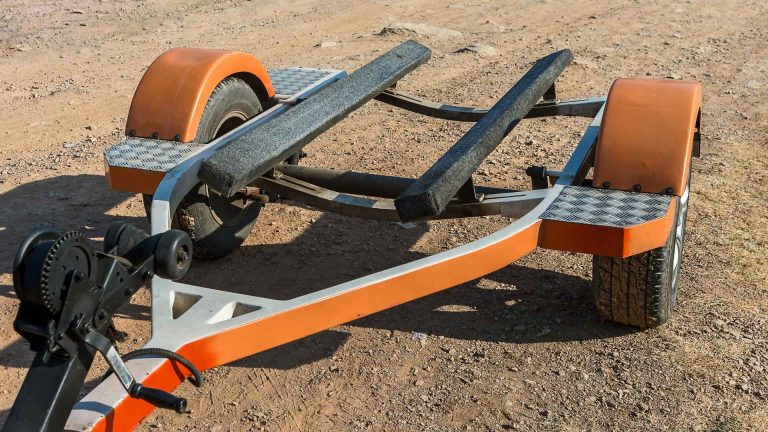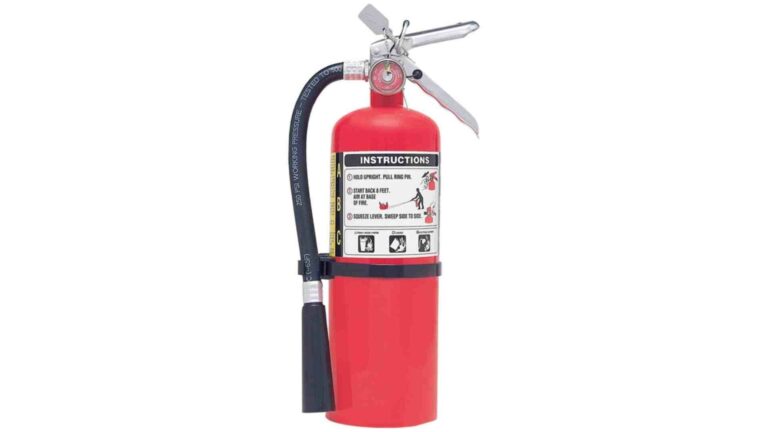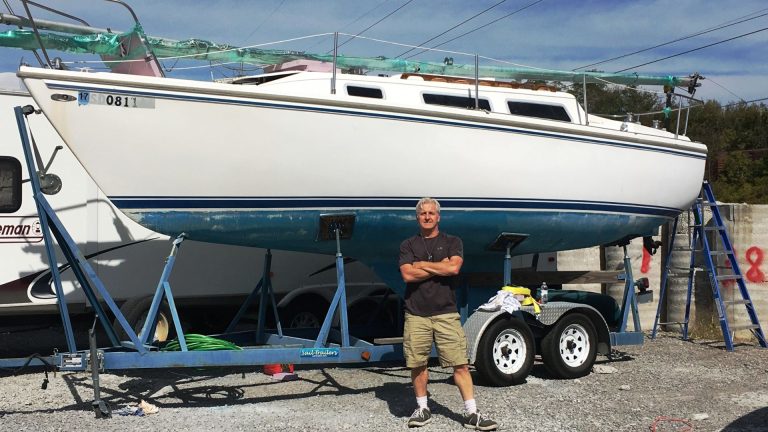How Much Does a Pontoon Boat Actually Cost?
Discover pontoon boat costs, from $15,000 to $175,000+. Learn key factors like size, engine, and features affecting prices in this detailed guide.
Pontoon boats have surged in popularity among recreational boaters, offering a versatile platform for fishing, family outings, watersports, or simply relaxing on the water. Their spacious decks, stable design, and customizable features make them an attractive choice for both novice and seasoned boaters. However, one of the most pressing questions for potential buyers is: How much does a pontoon boat actually cost? Prices can vary widely, ranging from as low as $15,000 for a basic model to over $175,000 for a luxury vessel. This comprehensive guide explores the factors influencing pontoon boat costs, provides detailed price breakdowns, and offers practical tips to help you make an informed purchase decision.
Factors Influencing Pontoon Boat Prices
The cost of a pontoon boat is determined by several key factors, including size, engine power, features, materials, and whether the boat is new or used. Understanding these variables will help you align your budget with your boating needs.
1. Size and Length
The size of a pontoon boat significantly impacts its price. Larger boats require more materials and labor, increasing manufacturing costs. Additionally, size affects passenger capacity, which is a critical consideration for buyers planning to host larger groups.
- Small Pontoon Boats (16-18 feet): These compact models are ideal for solo boaters or small families, accommodating up to eight passengers. Prices typically range from $16,000 to $28,000 for new models.
- Medium Pontoon Boats (20-22 feet): The most popular size for family outings, these boats offer a balance of space and affordability, with prices ranging from $28,000 to $50,000.
- Large Pontoon Boats (24-26 feet and above): Designed for larger groups or those seeking extra space for amenities, these boats can cost between $50,000 and $90,000, with high-end models exceeding $150,000.
For every two-foot increase in length, expect a price increase of approximately $1,000 to $1,500 for the same model, assuming similar features and engine specifications.
2. Engine Power and Type
The engine is one of the most significant contributors to a pontoon boat’s cost. Engine size, measured in horsepower (HP), determines the boat’s performance capabilities, from leisurely cruising to high-speed watersports.
- Standard Engines (50-90 HP): Suitable for casual cruising or fishing, these engines add $6,000 to $12,000 to the base price. For example, a 20-foot pontoon with a 60 HP engine might start at $20,000.
- Mid-Range Engines (90-150 HP): These engines offer more power for activities like tubing or waterskiing, increasing costs by $12,000 to $18,000. A 22-foot pontoon with a 90 HP engine averages around $30,000.
- High-Performance Engines (150-300+ HP): Designed for speed and heavy-duty watersports, these engines can add $18,000 to $35,000. Luxury models with twin engines or 300+ HP motors can push prices toward $100,000 or more.
Upgrading from a 90 HP to a 115 HP engine typically costs an additional $900 to $2,000, while moving from 115 HP to 150 HP adds $2,400 to $3,500.
3. Features and Amenities
Pontoon boats can be customized with a wide range of features, from basic necessities to luxury upgrades. The extent of these features directly influences the final price.
- Basic Models: These include essential features like standard seating, a Bimini top, and basic flooring. Prices start around $18,000 for a new 18-foot model.
- Mid-Range Models: These boats offer enhanced seating, fish finders, trolling motors, or upgraded stereos, with prices ranging from $35,000 to $70,000.
- Luxury Models: Equipped with premium features like plush seating, touchscreen navigation systems, built-in bars, LED lighting, and waterslides, these models can exceed $120,000. For instance, a fully customized 26-foot luxury pontoon with a 300 HP engine might cost $175,000 to $250,000.
Specialized features, such as fishing setups (e.g., livewells, rod holders) or watersport accessories (e.g., ski tow bars), can add $200 to $3,500 per item, depending on complexity.
4. Materials and Build Quality
The materials used in a pontoon boat’s construction also affect its price. Most pontoon boats feature aluminum pontoons and decks, which are durable and cost-effective. However, some high-end models incorporate fiberglass siding, which is pricier but offers a sleeker aesthetic and resistance to rust. Decking materials vary as well:
- Marine-Grade Plywood: A budget-friendly option, often requiring additional coverings like carpet or vinyl, which can add $300 to $1,200.
- Aluminum or Composite Wood: These materials are more durable but increase costs by $500 to $2,000.
- Vinyl Flooring: A popular upgrade for its durability and low maintenance, adding $300 to $1,200 to the price.
Brand reputation and craftsmanship also play a role. Premium brands like Avalon, Bennington, or Harris often command higher prices due to superior build quality and design.
5. New vs. Used
The decision to buy a new or used pontoon boat significantly impacts your budget.
- New Pontoon Boats:
- Advantages: Include manufacturer warranties (typically 2-5 years), the latest technology, and no immediate maintenance concerns.
- Price Range: $18,000 to $150,000+, with the most popular 22-foot models averaging $35,000 with a 90-115 HP engine.
- Drawbacks: Higher upfront costs and faster depreciation in the first few years.
- Used Pontoon Boats:
- Advantages: Can be 30-50% cheaper, with prices starting as low as $5,000 for older models or $12,000 to $70,000 for newer used boats.
- Price Examples: A 5-year-old 22-foot Sun Tracker tritoon with a 150 HP engine might cost $28,000, while a 1-year-old 22-foot Sweetwater with a 115 HP engine could be $27,000.
- Drawbacks: Potential maintenance issues, especially with older engines, and limited warranty coverage.
When buying used, inspect the boat for rust, hull damage, and engine condition to avoid costly repairs.
Price Ranges by Boat Category
To provide a clearer picture, here’s a breakdown of pontoon boat price ranges based on their category:
| Category | Price Range | Features | Examples |
|---|---|---|---|
| Entry-Level | $16,000 – $35,000 | Basic seating, modest engine (50-90 HP), simple Bimini top | Sun Tracker Bass Buggy 16, Lowe Ultra Series |
| Mid-Range | $35,000 – $70,000 | Enhanced seating, 90-150 HP engine, fishing setups, upgraded flooring | Bennington S Series, Harris Cruiser |
| Luxury | $70,000 – $150,000+ | Premium materials, 150-300+ HP engine, touchscreen controls, built-in bars | Avalon Excalibur, Premier Escalante |
Sample Dealer Prices for New and Used Pontoon Boats
The following table lists approximate dealer prices for specific models, including standard features and a painted trailer with a spare and brakes:
| Model | Specifications | Price |
|---|---|---|
| 18′ G3 Suncatcher Fishing Pontoon | 60 HP engine | $20,000 |
| 22′ G3 X22RF Fishing Pontoon | 115 HP engine | $28,500 |
| 22′ G3 X22RF Fishing Pontoon | 90 HP engine | $27,200 |
| 22′ Bentley Pontoon | 90 HP engine | $30,000 |
| 22′ Sweetwater Pontoon | 90 HP engine | $32,000 |
| 22′ Lowe SF232 Pontoon | 115 HP engine | $29,000 |
| 22′ Lowe SF232 Pontoon | 150 HP engine | $31,400 |
| 5-Year-Old 22′ Sun Tracker Tritoon | 150 HP engine | $28,000 |
| 1-Year-Old 22′ Sweetwater | 115 HP engine | $27,000 |
Note: Prices vary by location, dealer, and included features. Manufacturers like Avalon may list MSRP, but negotiated prices are often lower.
Additional Costs to Factor In
Beyond the purchase price, owning a pontoon boat involves ongoing expenses that should be included in your budget.
1. Maintenance and Repairs
- Routine Maintenance: Annual costs for oil changes, cleaning, winterizing, and tune-ups range from $600 to $1,200.
- Repairs: Engine repairs can cost $1,000 to $5,000 or more, depending on the issue. Regular maintenance helps minimize these expenses.
2. Storage and Docking Fees
- Indoor Storage: Costs $1,200 to $2,800 per year, offering protection from weather damage.
- Outdoor Storage: Ranges from $600 to $1,800 annually but may expose the boat to wear.
- Marina Docking: Fees vary by location, typically $1,000 to $3,000 per year.
3. Insurance and Registration
- Insurance: Annual premiums range from $250 to $700, depending on the boat’s value, usage, and location.
- Registration and Licensing: Fees vary by state, typically $40 to $250 annually, with boating licenses costing $55 to $65.
4. Accessories and Upgrades
Customizing your pontoon boat enhances its functionality and comfort but adds to the cost. Common accessories include:
| Accessory | Price Range |
|---|---|
| Double Bimini Top | $600 – $1,800 |
| Boat Cover | $300 – $900 |
| GPS/Fish Finder | $600 – $2,500 |
| Trolling Motor | $400 – $2,000 |
| Ski Tow Bar | $200 – $700 |
| Upgraded Stereo (Bluetooth) | $150 – $500 |
| Ski Ladder | $200 – $500 |
| Vinyl Flooring Upgrade | $300 – $1,200 |
| Mooring Cleat | $30 – $50 |
| Livewell | $200 – $1,000 |
| Waveshield | $1,500 |
| Power Assist | $2,500 |
| Patio Pad/Diving Board | $2,000 |
5. Taxes and Fees
Sales tax, title, and registration fees vary by state. For example, a $29,300 pontoon boat with a 6% sales tax might result in an out-the-door price of $31,000 after additional fees.
Depreciation and Resale Value
Pontoon boats, like cars, experience significant depreciation in their first few years. A $30,000 new pontoon may lose $4,000 to $5,000 in value immediately after purchase. Over the next three years, expect an additional $1,500 annual depreciation, slowing to $400-$500 per year until the boat is around 12 years old. Older boats in good condition can still retain value, with even well-maintained “clunkers” selling for $1,500 or more.
Depreciation Timeline (Chart)

Tips for Finding the Best Price
- Shop at Boat Shows: Boat shows offer significant discounts, often 25% or more, especially on last year’s models or demo boats. Dealers are motivated to clear inventory, making negotiation easier.
- Consider Smaller Dealerships: Repair shops that sell new boats often have lower overhead and may offer better deals than large boat lots.
- Buy Used for Savings: Look for lightly used boats (1-2 years old) to save $5,000 or more. Check platforms like Boat Trader or local listings for deals.
- Negotiate Smartly: Request discounts on accessories, extended warranties, or bundled safety gear. Compare dealer prices to manufacturer MSRPs.
- Inspect Used Boats: Prioritize engine condition and structural integrity. A well-maintained boat can last 20 years or more, but a neglected engine can lead to costly repairs.
- Explore Financing: Many dealers offer financing with 10-20% down payments. Compare interest rates and terms to fit your budget.
Addressing Common Concerns: Does Pontoon Pricing Make Sense?
Many buyers find pontoon boat pricing confusing, as the difference between base and luxury models often seems driven by trim rather than fundamental design differences. For example, a $50,000 tritoon and a $200,000 tritoon from the same manufacturer may share similar platforms, with price disparities attributed to features like premium upholstery, advanced electronics, or larger engines. Unlike cars, where high-end models often feature entirely different frames and engineering, pontoon boats tend to vary primarily in accessories and aesthetics.
However, some cost differences are justified. For instance, a $15,000 engine upgrade or high-quality materials like fiberglass can significantly enhance performance and durability. Direct-to-consumer manufacturers may offer better value by eliminating dealer markups, which can inflate prices by 30-40%. Buyers should focus on features that align with their needs—such as fishing setups or watersport capabilities—rather than paying for unnecessary luxury add-ons.
Conclusion: Making an Informed Pontoon Boat Purchase
Purchasing a pontoon boat is a significant investment, with prices ranging from $15,000 for a basic used model to over $175,000 for a fully loaded luxury vessel. By considering factors like size, engine power, features, and materials, you can narrow down options that fit your budget and boating goals. Whether you prioritize cost savings with a used boat or the reliability of a new model, thorough research, price comparisons, and strategic negotiation will ensure you get the best value.
Factor in ongoing costs like maintenance, storage, insurance, and accessories to create a realistic budget. Attend boat shows, explore smaller dealerships, and inspect used boats carefully to maximize savings. With the right approach, you’ll be ready to enjoy countless days on the water, whether you’re fishing, hosting friends, or cruising at sunset.
Happy Boating!
Share How Much Does a Pontoon Boat Really Cost? with your friends and leave a comment below with your thoughts.
Read How Much Does a Houseboat Cost: Setting Sail on a Dream until we meet in the next article.






